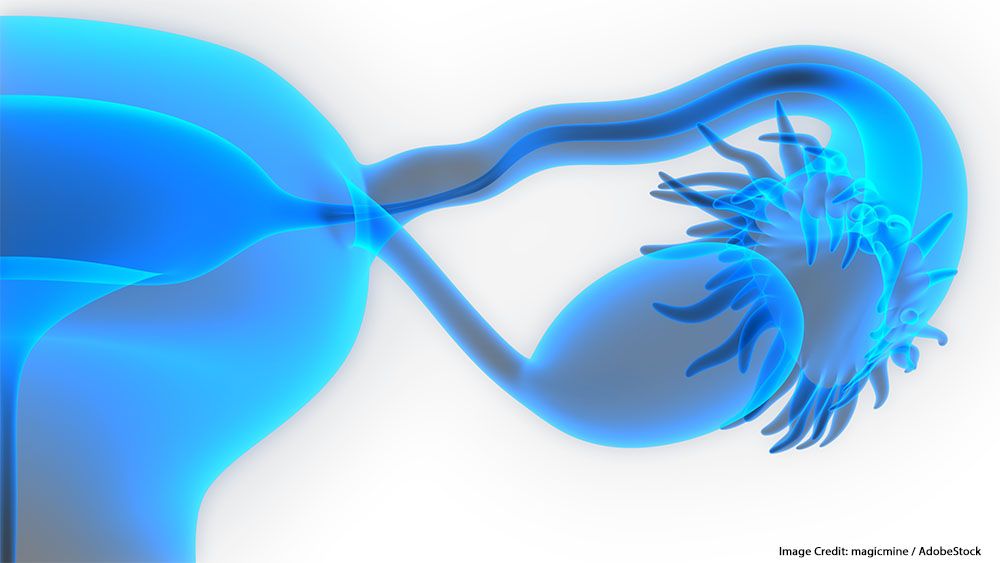Olaparib/Durvalumab Provides Meaningful PFS Benefit in Ovarian Cancer
Patients with advanced high-grade epithelial BRCA mutation–negative ovarian cancer appear to benefit from treatment with olaparib and durvalumab plus bevacizumab and chemotherapy.
Treatment with olaparib (Lynparza) and durvalumab (Imfinzi) plus bevacizumab (Avastin) and chemotherapy resulted in a statistically significant and clinically meaningful improvement in progression-free survival (PFS) over chemotherapy/bevacizumab alone in patients with advanced, high-grade epithelial ovarian cancer not harboring BRCA mutations, according to a press release from AstraZeneca.
"These data from the DUO-O trial provide encouraging evidence for this [olaparib/durvalumab] combination in patients without tumor BRCA mutations and reinforce our continued commitment to finding new treatment approaches for these patients," according to the manufacturers olaparib and durvalumab.

These findings read out of an interim analysis of the phase 3 DUO-O trial (NCT03737643). In the experimental arms, patients received durvalumab plus bevacizumab and chemotherapy followed by a maintenance regimen consisting of olaparib, durvalumab, and bevacizumab or maintenance with bevacizumab, durvalumab, and olaparib placebo. In the comparator arm, patients received chemotherapy plus bevacizumab and durvalumab placebo followed by maintenance with bevacizumab plus durvalumab placebo and olaparib placebo.
“While there has been significant progress for patients with advanced ovarian cancer, an unmet need still remains,” Susan Galbraith, executive vice president of Oncology Research and Development at AstraZeneca, said in the press release. “These data from the DUO-O trial provide encouraging evidence for this [olaparib/durvalumab] combination in patients without tumor BRCA mutations and reinforce our continued commitment to finding new treatment approaches for these patients. It will be important to understand the key secondary endpoints as well as data for relevant subgroups.”
In the durvalumab plus chemotherapy and bevacizumab arm, patients experienced a numerical improvement in PFS over the control cohort, although the change did not meet statistical significance. Investigators considered overall survival (OS) and PFS to be immature at the time of the interim analysis along with other secondary end points; these will be assessed during a subsequent analysis.
Moreover, the combination’s safety was found to broadly be consistent with read outs from previous clinical trials and each agent’s known toxicity profile.
The double-blind, placebo-controlled, multi-center trial randomly assigned patients 1:1:1 to each of the aforementioned arms. Approximately 1200 patients enrolled on the study across 179 study locations.
The study’s primary end point was PFS, with key secondary outcomes including OS, PFS2, health-related quality of life, pathologic complete response, overall response rate, pharmacokinetics, duration of response, time to first and second subsequent therapy, and time to death or discontinuation. Safety and tolerability based on adverse effects (AEs) and serious AEs represented another end point.
To enroll on the study, patients aged 18 and older were required to have newly diagnosed, histologically confirmed, stage III/IV, high-grade epithelial ovarian cancer. Additionally, patients were required to be eligible for cytoreductive surgery up front or have plans to undergo chemotherapy with surgical debulking. Patients also needed to have known BRCA1/2 status, an ECOG performance status of 0 or 1, and preserved organ and bone marrow function.
Patients with non-epithelial ovarian cancer, borderline tumors, low-grade epithelial tumors, or mucinous histology were not eligible to enroll on the study. Additionally, those who had previously received systemic anti-cancer therapy, prior treatment with a PARP inhibitor, plans to undergo cytotoxic chemotherapy, and an inability to determine BRCA status were not eligible for enrollment.
Additionally, patients who had active or previous autoimmune or inflammatory disorders, were of poor medical risk, had clinically significant cardiovascular disease, known brain metastases, persistent AEs of grade 2 or higher from a previous cancer treatment, or a known hypersensitivity to any of the study drugs could not enroll on the phase 3 DUO-O trial.
Reference
Lynparza and Imfinzi combination improved progression-free survival in newly diagnosed patients with advanced ovarian cancer without tumour BRCA mutations in DUO-O phase III trial. News release. AstraZeneca. April 5, 2023. Accessed April 5, 2023. https://bit.ly/3m9tWhf
Newsletter
Stay up to date on recent advances in the multidisciplinary approach to cancer.